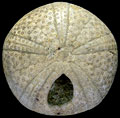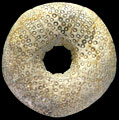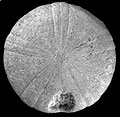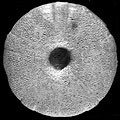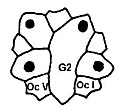The Echinoid Directory
Anorthopygus Cotteau, in Cotteau & Triger, 1859, p. 177
[=Pseudopileus de Loriol, 1901, p. 29, type species Pseudopileus zumoffeni de Loriol, 1901 (=Anorthopygus orbicularis Grateloup, 1836) ]
| Diagnostic Features |
|
|---|---|
| Distribution | Cretaceous (Albian to Maastrichtian) of Europe, the Middle East and Cuba. |
| Name gender | masculine |
| Type | Nucleolites orbicularis Grateloup, 1836, by original designation. |
| Species Included |
|
| Classification and/or Status |
|
| Remarks |
|
